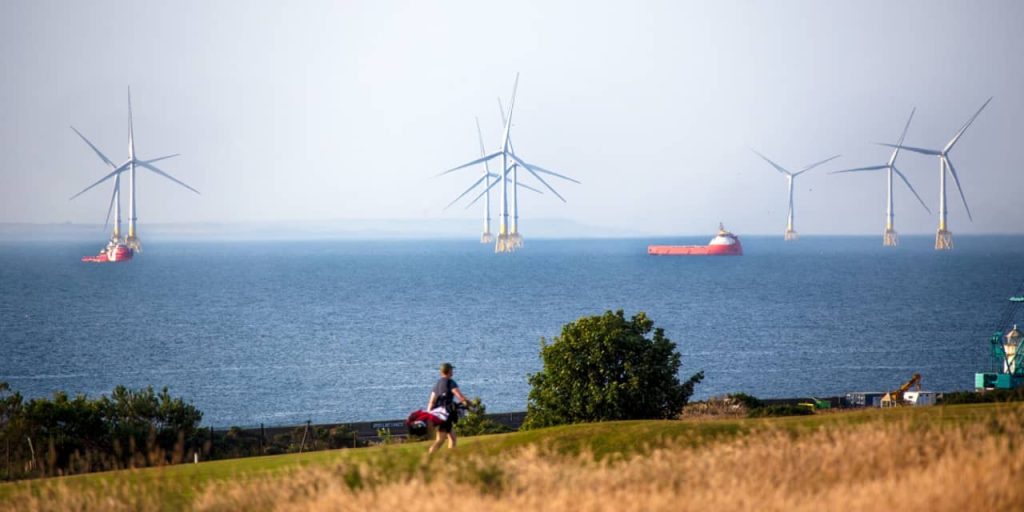The offshore-wind industry is finally getting some good news, after months of headlines about project cancellations and write-downs. Governments are pledging to help the industry recover, and some analysts expect Wall Street to warm to the industry.
The United Kingdom said last week that it would increase the electricity rates that wind developers can charge for the power from the turbines they install. The change amounts to a 66% increase to the highest potential price wind developers can charge, according to Bloomberg. Offshore-wind companies had stopped building and bidding on projects because of soaring costs that they couldn’t recover from electricity users. Swedish energy company Vattenfall walked away from plans to build a wind farm in the North Sea this summer because it said costs to build it had jumped 40%. The U.K.’s latest offshore-wind auction attracted no bidders.
The European Union has likewise promised to bolster offshore-wind projects, including by accelerating permitting and offering financing.
The same problems occurring in Europe have plagued offshore-wind companies attempting to build projects in the U.S.
Ørsted
(DNNGY), the world’s largest offshore-wind developer, halted plans to build two large wind farms off the coast of New Jersey last month, citing escalating costs.
The U.K.’s rate hike comes after New York state also sweetened the pot for wind developers. New York Gov. Kathy Hochul announced contracts for three offshore-wind projects last month that will pay wind developers more than the previous contracts the state had signed with developers. The rates that the state says it will pay to offshore-wind-power providers are 28% higher than the rates it agreed to pay in a prior solicitation, according to the New York State Energy Research and Development Authority (NYSERDA). The winning New York bidders included French oil major
TotalEnergies
(TTE), German power company
RWE
(RWEOY), a subsidiary of British power company
National Grid
(NGG), and privately held renewable-energy company Copenhagen Infrastructure Partners.
In addition, the Treasury Department confirmed last week that companies that lay cables from offshore-wind turbines to the shore will be eligible for tax credits, a boost that could speed the infrastructure to build more offshore wind.
Ørsted’s decline is a sign of the industry’s woes. Shares are off 49% this year, and last week the company announced the departure of its chief financial officer and chief operating officer following $4 billion worth of write-downs.
But at least one analyst thinks that the worst may be over for the company. Redburn Atlantic’s Simon Toyne thinks “there are finally grounds for optimism,” and upgraded Ørsted stock to Buy from Neutral last week. For one thing, the company has already taken substantial financial impairments that limit its downside risk. Government policy is now becoming more favorable, and Ørsted has several projects that can still do well.
Toyne thinks the company needs to slow the growth rate to steady its financial position. “From recent trauma will rise a stronger company amid a more mature operating environment, industrially and politically,” he wrote in a report. His price target of 400 Danish Krone represents 25% upside from the stock’s recent price of 320.
Write to Avi Salzman at [email protected]
Read the full article here









